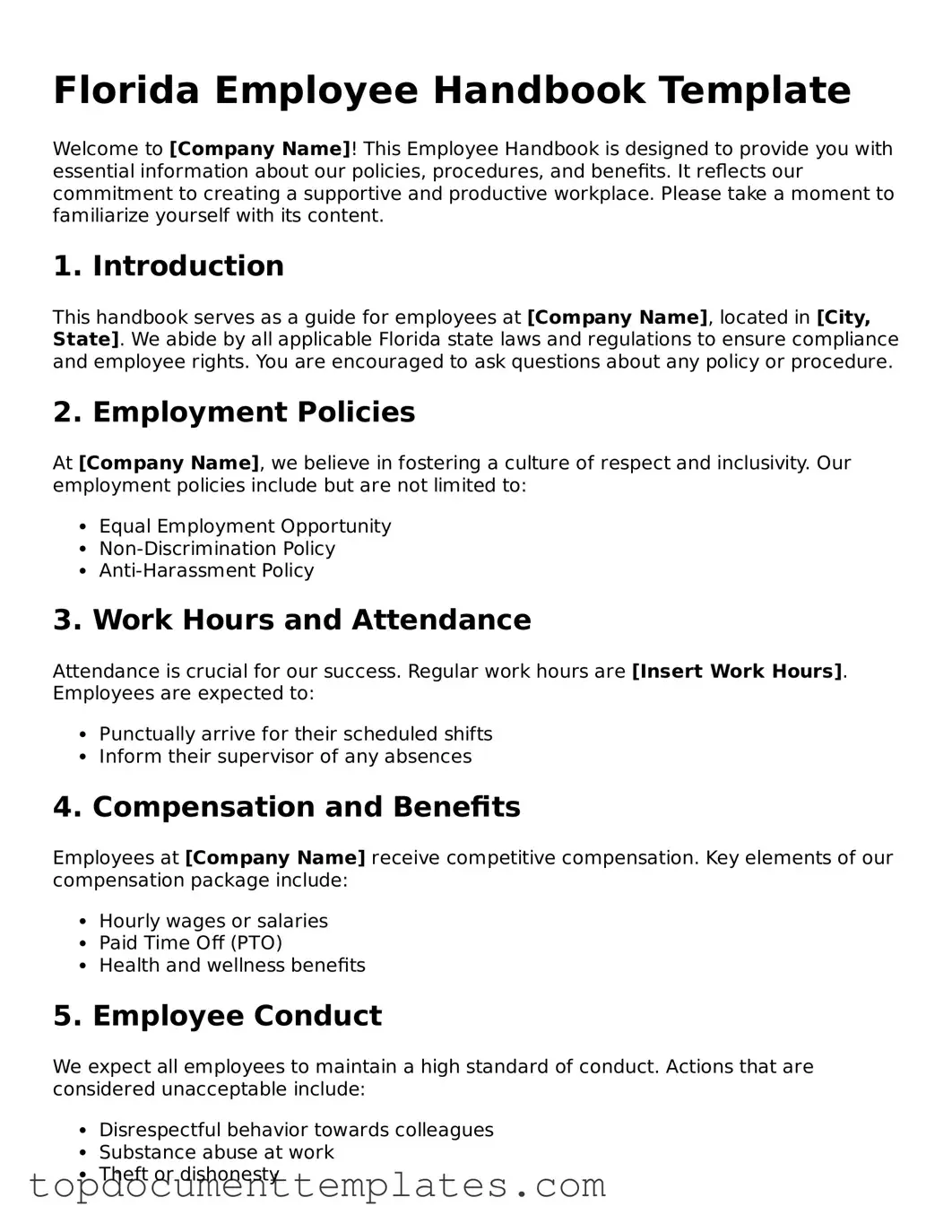Valid Employee Handbook Form for Florida State
The Florida Employee Handbook form serves as a crucial document that outlines the policies, procedures, and expectations within a workplace. This form not only helps employers communicate important information to their employees but also fosters a better understanding of workplace rights and responsibilities. To ensure compliance and clarity, consider filling out the form by clicking the button below.
Open This Form
